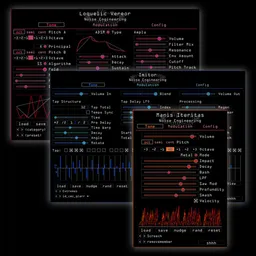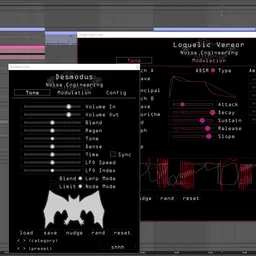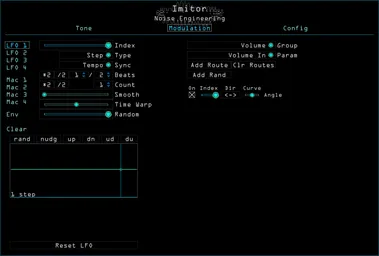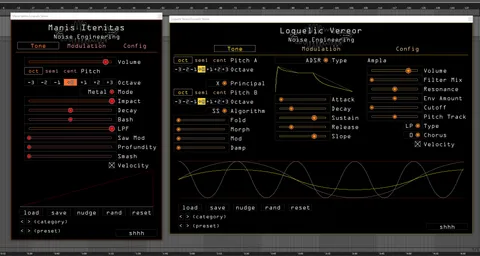Imitor is a delay with a huge range of capabilities. With up to 32 taps and feedback that goes over 100%, it’s possible to create huge tails that fill up a whole mix – but it can also be used for more precise and refined applications. Today, we’ll explore a couple of simple techniques that make use of Imitor’s flexibility for some fun effects.
Long reverb predelays
Predelay is an important part of reverb: short predelays are great for accurately mimicking physical spaces, and longer predelays are perfect for creative applications in a mix. I love extremely long predelays, but most reverb plugins don’t have settings that break out of the millisecond range. Enter Imitor: with a single tap enabled, blend all the way up, and Regen at minimum, it delays incoming audio by the amount of time defined by the Time parameter. If we put a reverb plugin like Desmodus after the Imitor in our chain, we can create a precisely definable predelay up to two seconds long.
And if you want the predelay time to follow the rhythm of your song, enable the Tempo Sync checkbox for BPM-synced predelay times!
This type of effect is a personal favorite on slow basslines, and it’s a great way to fill out the background of a track with more subtle settings, too.
Dancing slapback
Slapback delays are a staple in many types of production, from pop to rockabilly. They’re easy to create with almost any delay, but we can use Imitor’s Modulation tab to make them a bit more interesting.
A simple way to liven up any delay is to play with tap panning, and we can set up automatic randomized panning by modulating the Angle parameter with a randomized step sequencer. Right-click on Angle and increase the Index of LFO 1 to route some modulation to the panning, then click over to the Modulation tab to set up a step sequencer. Enabling Tempo Sync and setting Beats to ½ will advance our sequencer every 1/8th note, and by increasing the Random parameter our modulation will be different each time it loops around.

This is a great way to liven up a classic effect – plus, it adds some stereo width to any instruments routed into it.






